A tiny black hole, only three solar masses, has been found inside the Milky Way in the constellation Monoceros. One of the smallest black holes ever found, it is also the closest one to Earth. Plus, Perseverance, Gaia, a brown dwarf, new images of Jupiter, seismic monitoring from space, and this week’s What’s Up.
Media
Transcript
Hello and welcome to the Daily Space. I am your host Dr. Pamela Gay.
And I am your host Beth Johnson.
And we are here to put science in your brain.
In my head, rovers land on other worlds, spending a day or two stretching their travel-weary systems, and are then ready to rove. For the Perseverance rover, this has definitely not been the case, and for the past ninety days, Percy has stayed in a fairly small area doing a remarkable amount of babysitting a little helicopter named Ingenuity. That helicopter lacked the power or equipment to communicate back to Earth on its own, and as it is a new technology, it wasn’t entirely trusted to fly unsupervised. This meant, Percy focused on getting Ingenuity to a safe place to fly, dropped it off, and backed away to watch it flit about and record what they could on camera for all the nervous engineers and scientists back home.
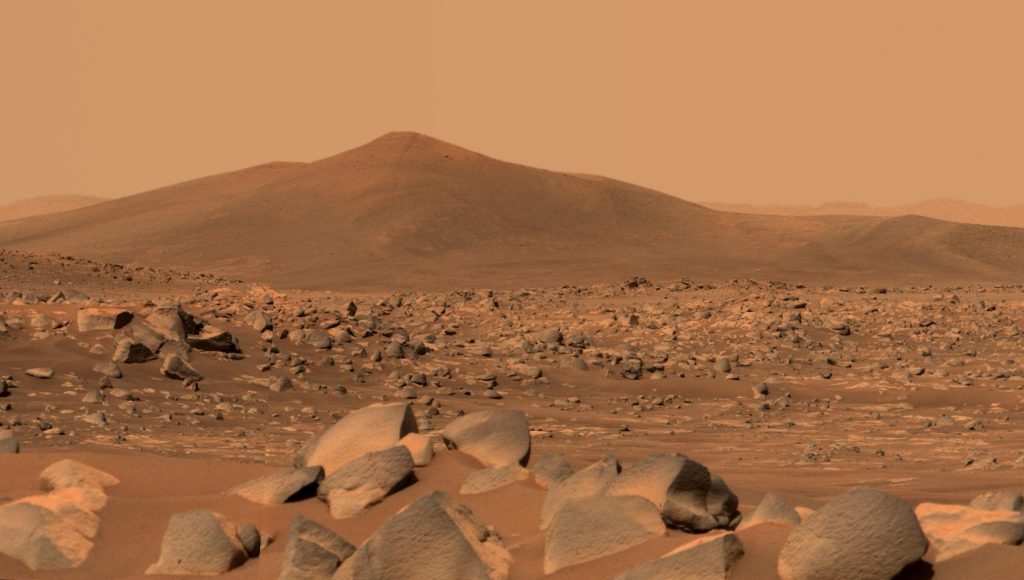
Now that Ingenuity has proven itself, and the mission is finally moving on to its primary science objectives, Percy is literally getting to flex its arm as it for the first time. This arm, like arms on the rovers that came before, is outfitted with a variety of tools and instruments, including a grinding wheel and cameras. This means Percy can rove up to a rock, grind away its surface, and look at the unweathered surface underneath. And that surface beneath is the key.
Jezero crater, where Percy landed, experiences wind and erosion from blowing sand. Sunlight and the radiation of space change the surface, and dust coats everything. To look for the specific minerals and fossils that may reveal the conditions needed for life, or that life itself. As Percy starts its exploration, it will collect rocks for later retrieval by a future mission that will bring the rocks back to earth.
The ESA’s Gaia space telescope is a powerhouse of technical wizardry. This system is used to systematically observe a large volume of our galaxy to measure both star brightnesses and positions. Since the same camera settings don’t work for stars of different brightnesses, and different cameras are good at seeing different colors, Gaia uses a suite of different detectors to gather information on everything that enters its field of view.
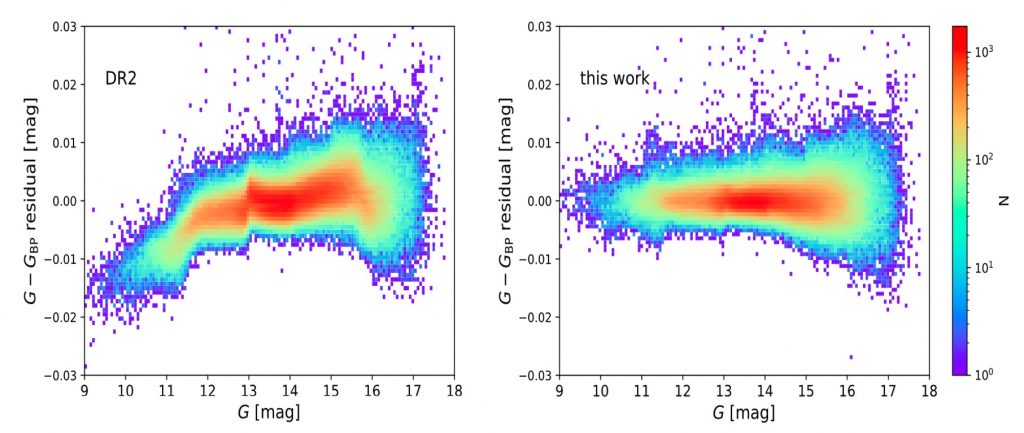
It is easy to calibrate position measurements between cameras because you can literally just line up the different images. Sorting any offsets that might exist in how brightness is measured from camera to camera is harder, however, and isn’t something Gaia can do without a little help from its friends. This is where the Chinese LAMOST telescope comes into play.
LAMOST is designed to observe stars of highly varying brightnesses across all their different colors simultaneously using a sensitive spectrograph. By looking at more than 800,000 stars with both LAMOST and Gaia, it became possible to calibrate Gaia’s brightness measurements to an unprecedented degree. According to team member Niu Zexi: Our work could be beneficial to studies where a high-precision color-color diagram is required, including the estimation of Gaia photometric metallicities, detection of peculiar objects, discrimination between binaries and single stars, and so on.
This is the kind of science that isn’t all that exciting. They literally used over 800,000 stars to calibrate their digital brightness measuring sticks, but this tedious work means all the more exciting research is possible.
That weird research? Like Pamela quoted, it includes sorting binary stars and single stars, and right now, we’re wishing Gaia and LAMOST were able to use their powers on the star HD 47127 and its mysterious companion or companions.
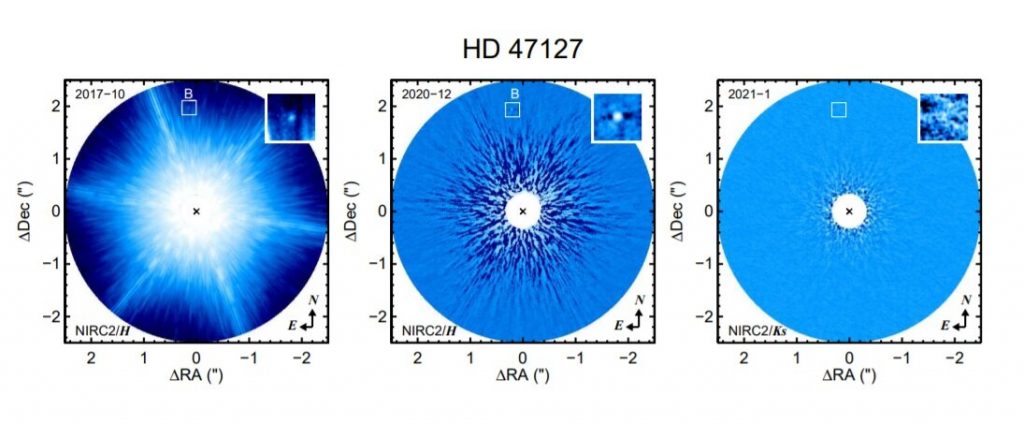
HD 47127 is a normal Sun-like star that has some sort of a really weird companion. This star has been studied for about twenty years using the 107” telescope at McDonald Observatory, which means it was being observed on the same telescope Pamela used for her Ph.D. while she was working on her Ph.D. Beyond that random tidbit, over the twenty years it has been observed, researchers have observed variations in the star’s motion consistent with it having a companion of unusual size.
This companion, or companions, appears to possibly be about one hundred some odd Jupiter masses in size but has the appearance of a standard brown dwarf. The thing is that brown dwarfs aren’t supposed to be this big. The error in the measurements is great enough that it’s possible to kind of match the data with models that have a more normal brown dwarf of more like 67-78 Jupiter masses. But that larger mass, which doesn’t make sense, really fits the data better, and this raises the question is it maybe two brown dwarf stars orbiting around each other as a tight binary?
We don’t have a good sense of how many brown dwarfs are out there. They are faint, and once they finish their initial burst of nuclear reactions, they spend their life either cooling and fading or shining only in the reflected light of companion stars. If this is a binary brown dwarf pair, it’s the first we’ve found, and it raises the cool possibility that there could be a planet out there, orbiting a Sun-like star, that has twin giants periodically pass across its sky. More data is needed to figure out if this is what’s really out there, but while we wait, can we get space artists to put this together?
Space is littered with really hard-to-see things. Rogue planets drift darkly between stars. Lonely black holes drift away from their points of formation. Surveys looking for how their gravity bends light allowed us to learn they don’t exist in huge numbers, but like so many soda bottles littering a park, they are out there.
It’s a bit disconcerting to know there are black holes out there, just hanging out, unseen.
Sometimes, a chance companionship between a star and a dark object will allow them to get noticed. This is the case for a newly discovered tiny black hole just three times the mass of the Sun. The red giant star V723 Mon was observed to move in ways that indicate it is orbiting a high mass object, and changes in its brightness indicate that something isn’t exactly bright. In fact, the observed changes in brightness appear to indicate not the light of a companion but rather the distortion of the star. As near as researchers can tell, V723 Mon is stretched out into the shape of a teardrop, and the star appears brighter when we see that teardrop from the side, and thus see more surface area.

Located just 1,500 light-years or so away, this is both about the smallest and totally the closest black hole so far discovered. Lead study author, Tharindu Jayasinghe, notes, that the discovery “implies that there are many more [small black holes] that we might find if we increased the volume of space that we searched.” And, the finding “should create a push to find these systems.”
While black holes are theorized to have masses between about 2.8 solar masses and millions or billions of solar masses, we haven’t had a lot of luck finding the small ones. There have been hints from gravitational wave studies of small ones, but those studies can’t distinguish between black holes and neutron stars, so the question has been, “How do we know for certain that neutron stars can’t be bigger?” There have also been a couple cases of stars appearing to maybe have dark, high-mass companions, but the observations weren’t definitive.
This new object, with its well-defined darkness and mass, is being called a unicorn for its uniqueness. Here is to hoping that rather than being a unicorn it is more like a common horse painted in Vantablack that will make perfect sense once we look a bit longer.
At first glance, we thought this next story was just a pretty new picture. We even questioned including it. And then I read the release, and, wow. The release buried the lede.
In new images, multiple images, mind you, released from NOIRLab, Jupiter is glorious. The images were taken with three different types of light using two different telescopes. Hubble took the pictures in visible and ultraviolet, and the infrared version was captured with the Near-InfraRed Imager (NIRI) instrument at the Gemini North observatory in Hawai’i. The infrared and ultraviolet versions are false-color images that emphasize each end of the spectrum because human eyes can’t actually see those colors. So we make them up.
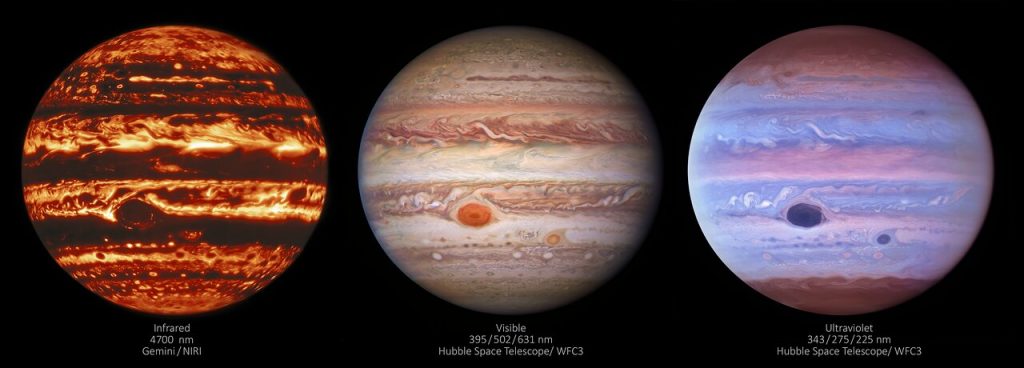
Now, the images are truly striking, and they show off Jupiter in wondrous detail. I cannot stop staring at them. You can see not just the banding of the gas giant and its Giant Red Spot, you can see all the swirls and whorls of various storms. Add in the infrared and ultraviolet, and the complexity is almost unreal. This is a planet in our solar system, and are observing it from Earth (or close to Earth in the case of Hubble).
More importantly, these images show off what multiwavelength astronomy can do: provide insight into the object of observation that we cannot get from visible light alone. For example, per the press release: The planet’s Great Red Spot — the famous persistent storm system large enough to swallow the Earth whole — is a prominent feature of the visible and ultraviolet images, but it is almost invisible at infrared wavelengths. Jupiter’s counter-rotating bands of clouds, on the contrary, are clearly visible in all three views.
On top of that, the Great Red Spot is bigger in infrared, which can pierce the thick cloud cover that absorbs other wavelengths. And in the visible and ultraviolet, chromophores become visible. These are particles that absorb blue and ultraviolet light, which makes the Great Red Spot, well, red.
Honestly, I could go on and on about these images. I highly recommend you check out the link to the actual press release, which will be in our show notes at DailySpace.org. You can see all the details for yourself and even compare the various images side by side. It really is an amazing piece of work.
Speaking of amazing work, the progress we continue to make in remote observing somewhat astounds me. Not only can we use ground-based telescopes to get images of planets in and out of our solar system, but we can also use satellites to monitor changes here on Earth.
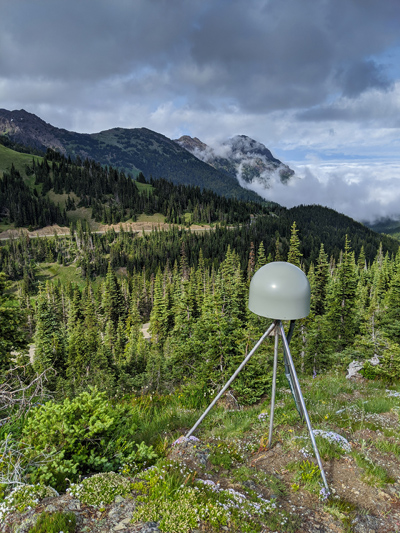
In a new report published in the Bulletin of the Seismological Society of America, researchers explain how they can use the Global Navigational Satellite System (GNSS) to monitor Earth for deformation in the crust due to earthquakes. Most impressively, the system can rapidly assess the magnitude and fault slippage, but only when it comes to quakes larger than a 7.0 magnitude. These large quakes in specific locations, as we have discussed before, can also cause tsunami, and the GNSS can help characterize an earthquake quickly to help get warnings out to the public as quickly as possible.
We do have ground monitoring systems scattered around the world that can be used for similar purposes, but they are much better when it comes to smaller quakes. At a certain point, you trade sensitivity for speed, and a large quake will overwhelm the ground-based networks with too much information while the space-based network can easily process the data unimpeded. Lead researcher Timothy Melbourne notes: The real power of the GNSS for the tsunami is buying more time and greater accuracy from the get-go for the warnings that come out.
The science we gain from the information will definitely help us understand these large earthquakes and their effects on Earth, but more importantly, using the GNSS helps save lives.
What’s Up
All right. We’re going to make a confession. Pamela and I have never really seen Mercury with our own eyes in the night sky. It’s a hard little planet to catch. It’s always ridiculously close to the Sun and either sets just before the Sun or rises just after and gets lost in the daylight. If it’s not up at sunset, I’m probably never going to be up early enough to catch it.
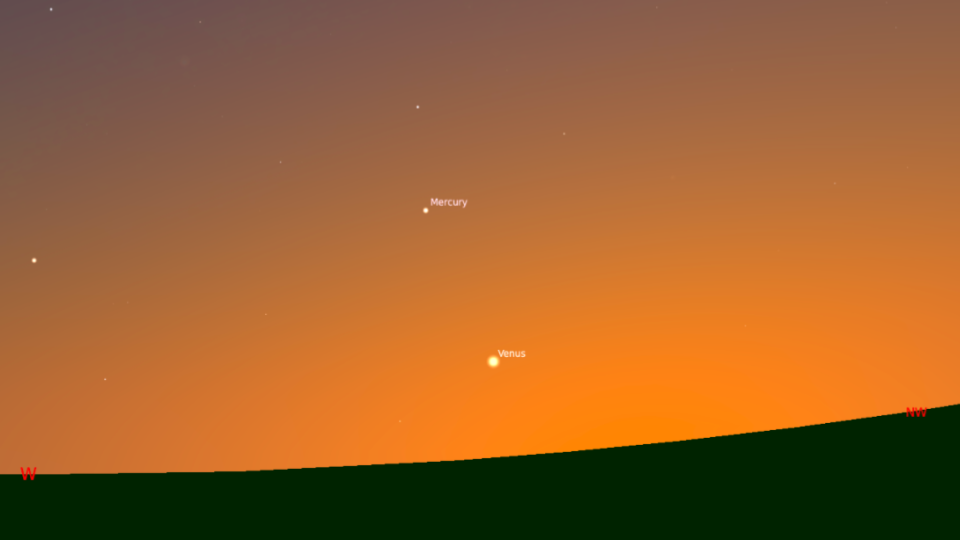
But now is our chance. Mercury is actually going to be visible multiple times this year, and it will reach its easternmost elongation – where it is farthest from the Sun in the sky – on May 17. You’ll still have to go out at dusk, but if you do that, and you look toward the west just above the setting Sun, you should be able to barely make out bright Venus in the afterglow and tiny Mercury above. Both planets will quickly set behind the Sun, so make sure you get out and look on the 17th when Mercury is easiest to see this month.
If you do miss the tiny planet, you can try again in the morning of July 4. After that, you’ll have to wait for sunset on September 14. As we said, this planet is a difficult one to catch sight of.
Last month, we brought you news of three novae that were visible with small telescopes. Now, one of those novae has unexpectedly brightened and is now visible to the unaided eye. Nova Cassiopeiae 2021, which was originally named V1405 Cas, was discovered at magnitude 9.6 in March by amateur astronomer Yuji Nakamura. It brightened to magnitude 8.0 and stayed there for a month, and then brightened again to 7.5.
Suddenly, last week, the nova jumped up abruptly in brightness, crossing the line of human visibility at 6.0 magnitude and is currently at least a 5.5 and still brightening. You have to look at it with an averted eye, where you try to glimpse it in your peripheral vision, but you can see it without binoculars now. However, binoculars will make the viewing easier. The best time to view this nova is before dawn when it’s highest, and you have to be able to see the constellation of Cassiopeia in your sky.
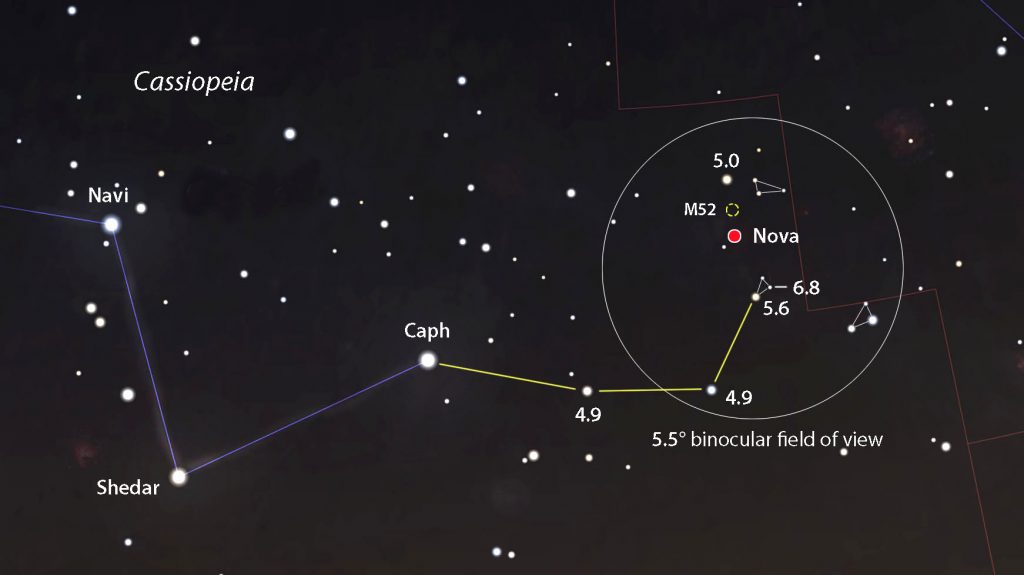
Sky and Telescope explains how to find this nova: Start at 2nd-magnitude Caph, located at the western end of the W, and use the brighter stars and homemade triangle asterisms shown on the map as steppingstones to the nova. Just south of the nova look for a bejeweled, fuzzy patch of light, the bright star cluster M52.
We’ll have a link to the article and finding charts on our website, DailySpace.org.
Keep in mind that this is not a supernova. This is not a star dying. This is a pair of stars, a white dwarf and a Sun-like companion, and the white dwarf is stripping hydrogen gas off the larger star. This infalling material spirals around the white dwarf then gets heated and compacted by the star’s immense gravity. The hydrogen starts to fuse, and what we see is the release of all the energy in the ensuing explosion. Both stars go on to live another day.
So get out and check out these two events, one at sunset and one at sunrise. They’ll both be worth the effort.
For now, though, this has been the Daily Space.
Learn More
With Ingenuity Working, Perseverance Begins Science Mission
- NASA JPL press release
China’s LAMOST Helps Calibrate Gaia Telescope’s Photometry
- CAS press release
- “Correction to the Photometric Colors of the Gaia Data Release 2 with the Stellar Color Regression Method,” Zexi Niu, Haibo Yuan, and Jifeng Liu, 2021 March 4, The Astrophysical Journal
Star Found to Have At Least One Possible Brown Dwarf Companion
- Phys.org article
- “The McDonald Accelerating Stars Survey (MASS): Discovery of a Long-Period Substellar Companion Orbiting the Old Solar Analog HD 47127,” Brendan P. Bowler et al., to be published in The Astrophysical Journal Letters (preprint on arxiv.org)
Tiny ‘Unicorn’ Black Hole Found in Milky Way is Closest One to Earth
- The Ohio State University press release
- Newfound black hole may be the closest to Earth (National Geographic)
- “A unicorn in monoceros: the 3 M⊙ dark companion to the bright, nearby red giant V723 Mon is a non-interacting, mass-gap black hole candidate,” T Jayasinghe et al., 2021 May 1, Monthly Notices of the Royal Astronomical Society
Detailed Images of Jupiter Showcase Capabilities of Multiwavelength Astronomy
Using GNSS to Monitor Large Seismic Events Can Save Lives
- SSA press release
- “Global Navigational Satellite System Seismic Monitoring,” Timothy I. Melbourne, Walter M. Szeliga, Victor Marcelo Santillan, and Craig W. Scrivner, 2021 May 11, Bulletin of the Seismological Society of America
What’s Up: Mercury at Sunset and Nova in Cassiopeia
- Swimming up sky and up river (EarthSky.org)
- Nova in Cassiopeia Brightens Suddenly (Sky & Telescope)
Credits
Written by Pamela Gay and Beth Johnson
Hosted by Pamela Gay and Beth Johnson
Audio and Video Editing by Ally Pelphrey
Content Editing by Beth Johnson
Intro and Outro music by Kevin MacLeod, https://incompetech.com/music/


 We record most shows live, on Twitch. Follow us today to get alerts when we go live.
We record most shows live, on Twitch. Follow us today to get alerts when we go live.